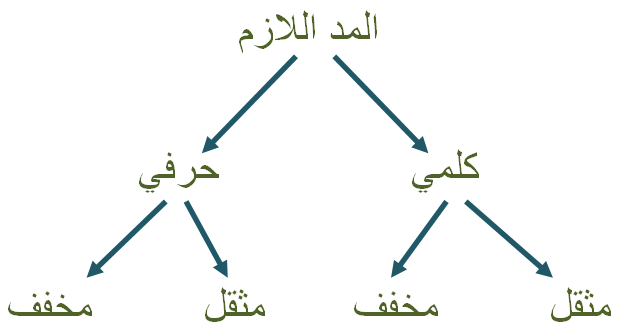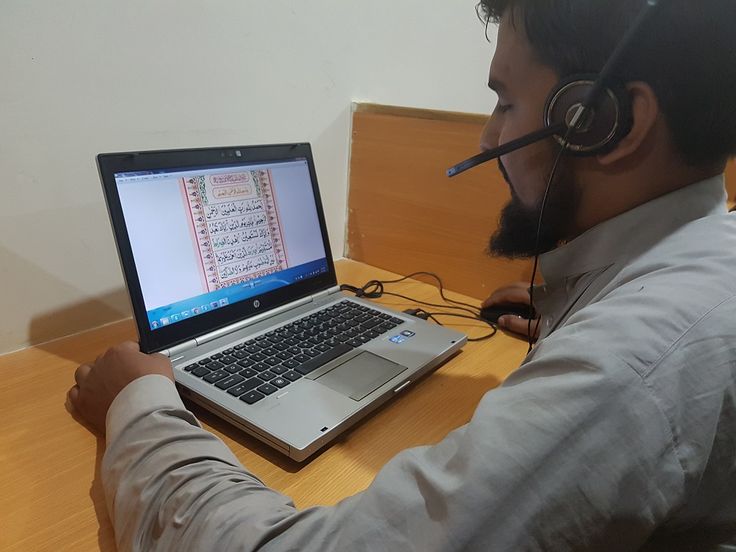As we mentioned before in our Tajweed series, Madd is the name given to the lengthening of sounds. In Tajweed, this refers to extending the sound of a vowel. Letters of madd are: (و – ى – ا).
There are some Tajweed rules in order to protect the language from mistakes and read the Quran beautifully and correctly, Madd is one of them and it has different types such as:
- Madd Tabee’ee or Normal Extension.
- Madd Laazim or Mandatory.
- Madd Mutassil or Connected.
- Madd Munfasil or Disconnected.
- Madd Aarid Lissukoon or Contingent upon Sukoon.
- Madd Badal.
- Madd Iawd… etc.
Today’s topic is Madd Lazim, let’s now learn its meaning, types, and how it is applied.
Table of Contents
What Is Madd Laazim?
Laazim is one of the Madd types in Tajweed. and it means necessary or mandatory Madd. If a permanent Sukoon comes after the letters of Madd (و – ى – ا) in a word, Madd Lazim occurs.
Here comes an important question: What is the meaning of permanent Sukoon in the first place? Well, permanent Sukoon is the type of Sukoon that is fixed and pronounced whether you decide to stop or continue while reading a verse from the Quran.
How Many Types of Madd Lazim Are There?

Since Madd Lazim is divided into two in terms of its occurrence in words (kalima) and letters (harf), again it is divided into two as the form of the Sukoon. There are four types of Madd Lazim as follows:
1. Madd Laazim Kalimi Muthaqqal
We call it heavy word-based necessary prolongation. If Sukoon (in Shaddah form) comes after the mad vowels, it is called Madd Laazim Kalimi Muthaqqal (the heavy word).
Examples of Madd Laazim Kalimi Muthaqqal: وَلاَ الضَّالِّين – مَنْ يُشَاقِّ اللَّهَ – قَالَ أتُحَاجُّونَنَا
2. Madd Laazim Kalimi Mukhaffaf
We call it light word-based necessary prolongation. If the permanent Sukoon comes after the Madd letters, it is called Madd Laazim Kalima Al-Mukhaffaf. There is only one example of Madd Laazim kalima Mukhaffaf in the Quran.
Example: آلْآنَ (Surah Yunus, verses 51 and 91)

3. Madd Laazim Harfee Muthaqqal
We call it heavy letter-based necessary prolongation. Madd Laazim occurs when the permanent Sukoon (in the form of a Shaddah) comes after the letters of Madd. This rule only appears in Muqataa letters.
Example: When we pronounce الم like أَلِفْ لآمِّيمْ
It is possible to encounter examples of Muqataa while reading the Quran. But we read these letters as they are written in the example, that is as if the letter meem has a Shaddah on it. According to the Tajweed rules, since two meem letters cannot be written in succession, the letter meem is pronounced as if there is a Shaddah on it. The letter Madd Lazim is called Harfee Muthaqqal because this rule occurs above the letter.
Madd Laazim Harfee Mukhaffaf
What is madd Lazim Harfi Mukhaffaf? In this last option, Sukoon comes after the letters of Madd, and since this event occurs in the letter, not the word, the letter is called Harfee Mukhaffaf. It only happens in Huruf Muqataa.
Let’s see with madd Laazim examples:
- ص (صَادْ)
- (يس (يَاسِينْ
As you can see in all the cases given above, the reason for elongation is fixed Sukoon. Therefore, they are all studied under the title of Madd Al Laazim which we prolong all its types for 6 counts.
Read Quran Online with Tajweed!

Now you can learn the book of Allah properly with Tajweedfrom the comfort of your home! All it takes is just a few clicks to contact us and enroll in our Special Tajweed Lessons and start such a rewarding endeavor.



































